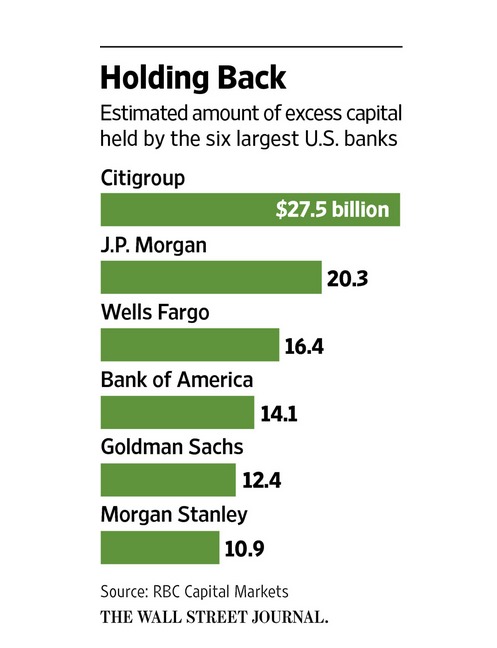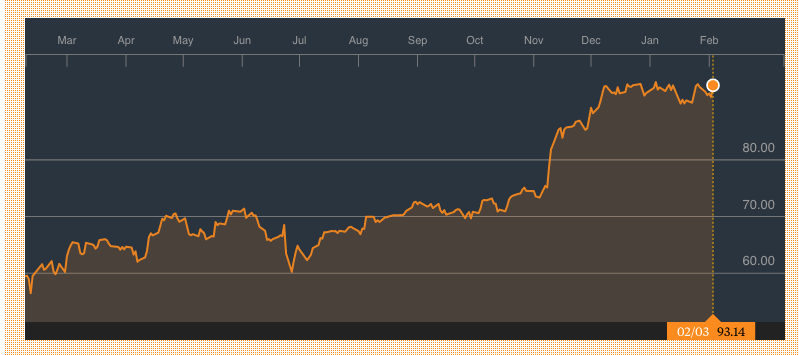The Trump administration’s quest to ease up on bank regulation could mean a windfall for investors, in my view.
According to the Wall Street Journal, the six biggest U.S. banks could potentially return more than $100 billion in capital to investors through dividends and share buybacks if the White House’s push to wind back post-financial crisis reforms goes forward.

Last week, bank shares soared on news that Trump had signed a memorandum ordering a review of the Dodd-Frank Act, which has forced banks to tie up a lot of capital to ride out any future crises.
The benchmark KBW Bank Index, which tracks 24 banking companies, is up 55% over the past year as of February 3.

Fed Policy
Financial stocks also received a boost last summer, when it became clear the Federal Reserve was on track to move interest rates higher from near-zero lows.
Higher rates means improving profit margins on loans.
In December, the Fed raised its key interest rate by 0.25%. And Fed Chairman Janet Yellen recently signaled that more hikes are on the way.

Earnings
Bank earnings have also been robust.
JPMorgan Chase (JPM), Bank of America (BAC) and Citigroup (C) all reported solid fourth quarter numbers.
Former Goldman Sachs (GS) executive Gary Cohn, now director of the National Economic Council, is orchestrating Trump’s bid to overhaul financial regulations.
Bankers have argued that those buffers imposed by the Obama administration are too costly and way above what’s needed to absorb losses.
Regulators, however, don’t want to see a replay of the 2008 financial crisis, when teetering big financial firms failed to withstand a big shock in the mortgage markets and required taxpayer-funded buyouts.
Takeaway
Bank stocks certainly have had a great run and earnings look robust.
In my opinion, if capital burdens are eased by the Trump administration, investors may be the short-term beneficiary.
But whether this is a wise move in the long-term won’t be clear until the next financial meltdown.
Photo Credit:Hiromichi Torihara via Flickr Creative Commons




